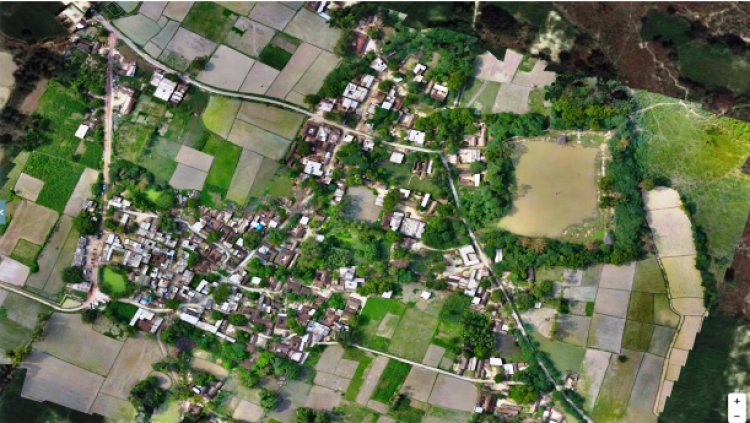The celebration of National Panchayati Raj Day marks a redefining moment in the Constitutional history of India to invigorate and strengthen grassroot democracy in the country, through the institution of Panchayati Raj (73rd Amendment) Act, 1992. This day is also remarkable as on 24th April 2020, the Government of India launched a central sector scheme, Survey of villages and mapping with improvised technology in village areas (SVAMITVA). Through implementation of this scheme, GoI aims at formalization of land tenure in the abadi (inhabited) area. The abadi area refers to village site lands that were exempted for appropriation of land revenue as this land were not surveyed in most of the states. The abadi land is known by different terminologies such as Lal Dora in parts of North India or Gaothan in Maharashtra. Lal Dora lands were initially demarcated in Delhi through the land settlement of 1908-09 to assign this area for village abadi and was later on extended to the states of Haryana and Punjab and parts of Northern India.
SVAMITVA uses drone technology as a means to legalize land tenure, ensure financial inclusion through monetization of land for credit and build trust in the communities. It would also help the Gram Panchayats to utilize the land for fiscal purposes and improve its tax-base. However, there are certain institutional gaps as to who is the custodian of land records and certain socio-cultural challenges that stand in the way of successful implementation of the policy.
SVAMITVA was launched in the year 2020-21 as a pilot project in the state of Andhra Pradesh, Haryana, Karnataka, Madhya Pradesh, Maharashtra, Punjab, Rajasthan, Uttar Pradesh, and Uttarakhand. GoI aims to implement the scheme during 2021-25 across the country in a phased and gradual manner with the aim to cover all the villages of the country. If one looks at the progress of the scheme, so far, approx. 31,46, 207 property cards have been distributed across the country. Out of the total property cards issued, Uttar Pradesh (71 percent) has distributed maximum no. of property cards, followed by Madhya Pradesh (13 percent), Himachal Pradesh (11 percent), Uttarakhand (3 percent), Rajasthan and Karnataka (less than 1 percent). Other state are still straggling to even start with the implementation of policy. Also, there has been a massive gap between the Budget Estimate (BE) and actual expenditure of the policy. From the BE of 200 crores in FY 2021-22, the actual expenditure (105.53 crores) was merely 52.76 percent of the proposed BE. In the present FY 2022-23, there has also been a massive retrenchment in the BE of the scheme, it has gone down by 25 percent.
SVAMITVA suffers from certain institutional defects as at the national level, the onus for framework and implementation of the scheme has been given to the Ministry of Panchayati Raj (MoPR). Whereas, at the state level, the responsibility for updation of property information has been given to the state revenue department. The responsibility for surveying the land, keeping the records, recording and mutation has been the exclusive responsibility of the state revenue department while Panchayati Raj Institutions (PRIs) were formulated with the aim to attain decentralization and participatory local self-government. Also, local government is listed as a state subject, therefore the onus falls on the state legislatures to determine various aspects of Panchayati Raj within the constitutional framework. It is to be seen how at the ground level, the policy attempts to attain convergence between the functioning of revenue department and Panchayati Raj for successful implementation of the policy. Moreover, the Lal Dora areas of Delhi have been kept out of the scheme as the village in Delhi falls under the administrative jurisdiction of the municipalities.
Through formalization of land tenure and issuance of property cards, SVAMITVA aims to monetize land that for obtaining credit from banks and other financial services. However, the fact remains that land continues to be perceived as a social asset. The importance attached to the land cannot be solely adjudicated in terms of its economic value or as a means of generating income and growth. Communities at the grassroot level shares a deep ethereal relationship with land and remains morally and emotionally attached to it.
It is to be seen how SVAMITVA with the use of drone technology can helps in overcoming land disputes, its complexities and ensure financial inclusion without addressing the institutional gaps and socio-cultural challenges.

